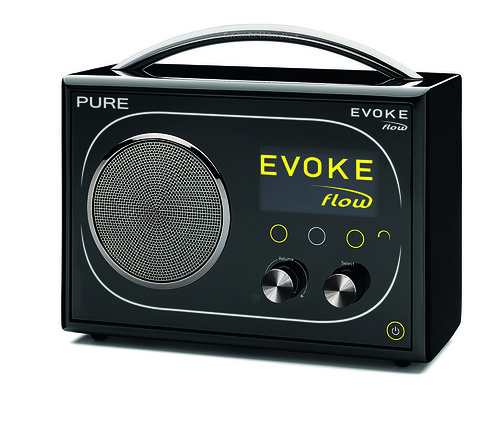Regular acquaintances of mine will know that I have an interest (“Bore for Britain”, I hear you shout) in aviation, and I have infrequently peppered this otherwise technology orientated blogged with occasional aviation events of note.
Aviation has some parallels with radio. It’s got big fixed costs, you need relatively skilled people to make it work, and the inventory is highly perishable. Once your plane has taken off / once your adbreak has started, you’ve made all you’re going to make from it.
Inventory management has been revolutionised in both industries, but the aviation industry is way ahead of radio and provides some useful pointers for radio. I know many people in aviation, at the big airlines, who laughed openly at the idea that someone would hop onto the web and buy their own ticket. That, they said, was far too complicated. That’s what we have agents and sales people for, because ordinary passengers could never cope. Big – BIG – mistake. Their failure to provide a low-cost entry point allowed Easyjet and Ryanair to enter the market and bring aviation to whole new demographics. Google Adsense for Audio is doing the same, and every radio company needs to think about self-provisioned audio advertising, and quickly.
But back to aviation. Unlike radio ad breaks, you can’t stretch a plane to stick a few more seats on when demand rises, so yield management is absolutely paramount. The algorithms that manage yield in aviation are e=mc2 compared to radio’s 1+1=2 inventory management (and yes, that’s even taking into account the most clever ad revenue management systems). Aviation algorithms process with thousands of inputs – absolutes, and trends. Current and historic. Your radio station may keep track of major sporting events, but airlines track events, conventions, and more.
The recession / economic slowdown is going to test those algorithms to the limits.
LOCOs (LOw COst Airlines) work absolutely on a high load factor, low seat-cost basis. Their central marketing pitch is “fly somewhere for £1”. If they sell 50 seats on a 150 seat plane at £1, the perception is “wow – cheap airline”, and never mind the people who are buying the last 10 seats at £150. Industry analysts watch LOCO load factors like a hawk, because they know that LF’s below 80% are seriously into danger zone for the whole LOCO business model. Not only do the last 10 seats make all the money, the last 30 passengers would also have paid £300 to check bags in, and about £100 for in-flight beverages. At some airports, the “marketing assistance” (backdoor discounting) only happens above certain numbers of passengers.
Full service airlines work differently. Yield is the key here. If a flight pushes back at 50% load factor, that’s fine, because that aircraft might have 3-4 business passengers onboard paying £500+, 20 passengers paying £350, 20 passengers connecting into long-haul flights paying £700-£800, and only 10-15 passengers on the £39 promotional fare. Promotional fares for full service airlines are marketing devices, not the foundations of the business model.
Ryanair, Easyjet et al. claim they’ll do better in a recession, because they’ll stay cheap and people will move from full service airlies. I beg to differ. The experience on the LOCOs is below that of a proper airline, and the majority of fares are moving towards parity. The kind of people who discretionally fly on Ryanair or Easyjet will keep their money to pay for electricity, petrol and food. No more jetting off to Prague for the weekend.
For what it’s worth, I suspect Easyjet and Flybe have been clever enough avoid the “Value Brand” perceptions of a LOCO, and have the right routes and additional benefits to hold business travellers in, although they’re still going to be paying more to fly. And the full service airlines can hold onto yield, because they treat their customers relatively well, and offer proper services like interlined tickets and unified schedules.
If Ryanair go under, I’ll be up the front cheering. Never has an airline (and its Chief Executive) treated its customers with such disgust and disdain. And they don’t do much for their staff too, by all accounts. Michael O’Leary’s “gobbier than thou” approach might have been acceptable a few years ago, but now it just personifies Ryanair as the yobs and louts airline, which doesn’t care a sh*t. I hear from more people who have paid “not £1” fares and had terrible service – when for £20-£30 more, they could have flown on a reputable airline. When the Chief Executive of an airline accuses BAA of being “rapists”, you know he’s gone too far – too much pressure, maybe?
There will be far fewer airlines in Europe in three years time. The Boeing idea of thousands of direct routes, used to justify the development of 787, is looking very shaky. In that respect, the concept of Airbus’ hub-to-hub future on which A380 is centred looks much more realistic, and environmentally sound. In broad terms, Europe will centre on a few hub centres, operated by either OneWorld or StarAliiance. (I have my doubts about SkyTeam’s strength beyond KL-AF). Once the airline industry has consolidated, and has optimised the size and capacity of its fleet, it might look commercially attractive again.
Maybe that’s another lesson for the radio industry too?
Photo: Our Easyjet Boeing 737-700 on the tarmac at Bristol Airport by alistairmacmillan@flickr



